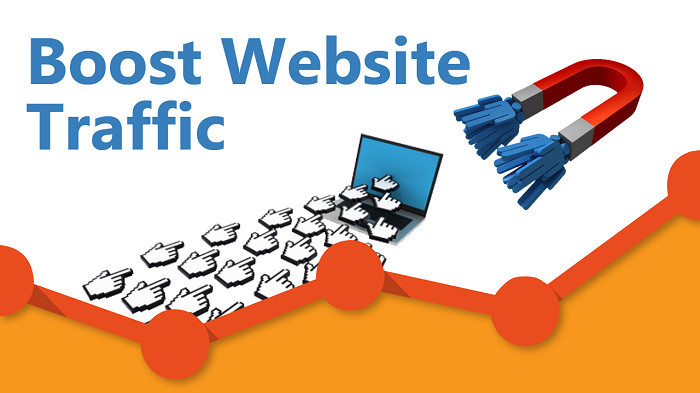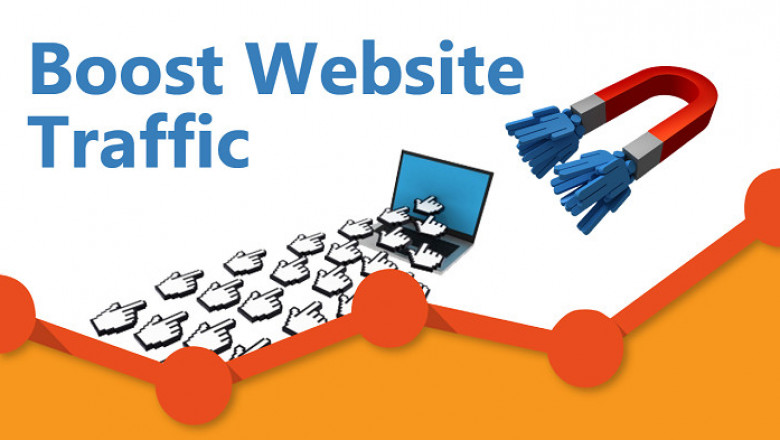views
In the competitive world of e-commerce, simply having an online store isn’t enough. To thrive, you need consistent traffic that converts into paying customers. This is where SEO (Search Engine Optimization) becomes essential.
By optimizing your e-commerce website for search engines, you can not only increase visibility but also attract high-intent users who are more likely to make a purchase.
However, effective SEO services for e-commerce is a strategic process involving various techniques tailored to online stores.
Optimize Product Pages for Search and Conversion
Craft Engaging Product Titles and Descriptions
Your product pages are the lifeblood of your e-commerce sites. A well-optimized product page should:
- Include primary keywords in the product title.
- Use concise, engaging descriptions that highlight benefits.
- Incorporate secondary keywords naturally within the description.
For example, instead of just saying “Red Running Shoes,” you can use “Lightweight Red Running Shoes for Everyday Athletes.” This approach improves your search ranking while appealing to potential buyers.
Add High-Quality Images with Alt Text
E-commerce success often depends on visuals. Use clear, high-resolution images and ensure every image has descriptive alt text containing relevant keywords. This improves accessibility and enhances your SEO ranking.
Utilize Structured Data to Boost Visibility
Structured data, or schema markup, helps search engines better understand your site content. For e-commerce sites, structured data can:
- Showcase product ratings and reviews in search results.
- Highlight price, availability, and promotions.
- Improve the chances of your site appearing in rich snippets.
How to Implement Structured Data
- Use tools like Google’s Structured Data Markup Helper.
- Apply schemas such as Product, Offer, and Review to your pages.
- Test your structured data using the Rich Results Test Tool to ensure accuracy.
Rich snippets not only make your listings stand out but also increase click-through rates, driving more traffic to your site.
Improve Site Speed and Mobile Optimization
Why Speed Matters
A slow-loading site frustrates users and impacts conversions. Studies show that a one-second delay in page load time can reduce conversions by 7%.
Steps to Improve Page Speed
- Compress images without compromising quality.
- Use browser caching to improve repeat visits.
- Minimize JavaScript and CSS files.
The Importance of Mobile Optimization
With the majority of e-commerce traffic coming from mobile devices, a responsive design is non-negotiable. Google’s mobile-first indexing means your site’s mobile version should offer seamless navigation and fast load times.
Focus on Long-Tail Keywords
Long-tail keywords are specific search phrases that cater to niche audiences. They have lower competition and higher conversion potential.
Examples of Long-Tail Keywords
- “Eco-friendly yoga mats for beginners” instead of “yoga mats.”
- “Affordable waterproof jackets for hiking” rather than “jackets.”
How to Find Long-Tail Keywords
- Use tools like Google Keyword Planner, Ahrefs, or Ubersuggest.
- Analyze customer reviews and questions to identify common queries.
Integrating long-tail keywords into your product pages and blogs increases your chances of attracting ready-to-buy customers.
Leverage Content Marketing to Attract Visitors
Blogging and content marketing are powerful tools for SEO. They not only improve your website’s authority but also engage potential customers throughout their buying journey.
Types of Content That Work
- Educational Blogs
Write articles that solve problems or answer questions. For instance, a store selling hiking gear could create blogs like “How to Choose the Best Backpack for Your Next Adventure.”
- Buying Guides
Create detailed guides to help customers make informed decisions, such as “Top 10 Running Shoes for Long-Distance Runners.”
Build Backlinks to Boost Domain Authority
Why Backlinks Matter
Backlinks signal to search engines that your site is trustworthy and authoritative. However, the quality of backlinks is more important than quantity.
How to Build Quality Backlinks
- Partner with Influencers: Collaborate with bloggers or influencers in your niche to review your products.
- Guest Post on Relevant Blogs: Share valuable insights on other websites to link back to your store.
- Leverage Social Media: Share your content widely to encourage others to link to it.
Backlinks not only improve your search rankings but also drive referral traffic to your site.
Improve Internal Linking Structure
Internal links guide users and search engines through your website. They:
- Help distribute link equity across pages.
- Encourage visitors to explore more of your site.
Best Practices for Internal Linking
- Use descriptive anchor text with relevant keywords.
- Link to related products or blog posts within your content.
- Avoid excessive linking, which can confuse users and dilute SEO value.
An effective internal linking strategy keeps visitors on your site longer, increasing the likelihood of conversions.
Prioritize Customer Reviews and Ratings
Positive reviews not only influence potential customers but also boost your SEO. Search engines value fresh, user-generated content like reviews.
Tips for Collecting Reviews
- Send follow-up emails post-purchase requesting feedback.
- Offer incentives like discounts for leaving reviews.
- Display reviews prominently on product pages.
Use Reviews Strategically
Include relevant keywords in customer reviews by encouraging users to mention specific product features.
Monitor Performance with Analytics
Measuring your SEO efforts is crucial for long-term success.
Tools to Use
- Google Analytics: Track traffic sources, bounce rates, and conversions.
- Google Search Console: Monitor keyword performance and fix crawl errors.
- Third-Party Tools: Tools like SEMRush or Ahrefs provide deeper insights into rankings and backlinks.
Set Measurable Goals
Define clear objectives, such as “increase organic traffic by 20% in six months,” and track your progress regularly.
Conclusion
SEO for e-commerce is more than just driving traffic; it’s about attracting the right audience and converting them into loyal customers. By optimizing product pages, leveraging long-tail keywords, enhancing site speed, and employing a robust content and backlink strategy, you can turn your e-commerce site into a revenue-generating powerhouse. Remember, SEO is a continuous process that requires constant refinement. Start implementing these strategies today, and watch your traffic turn into tangible results.























Comments
0 comment